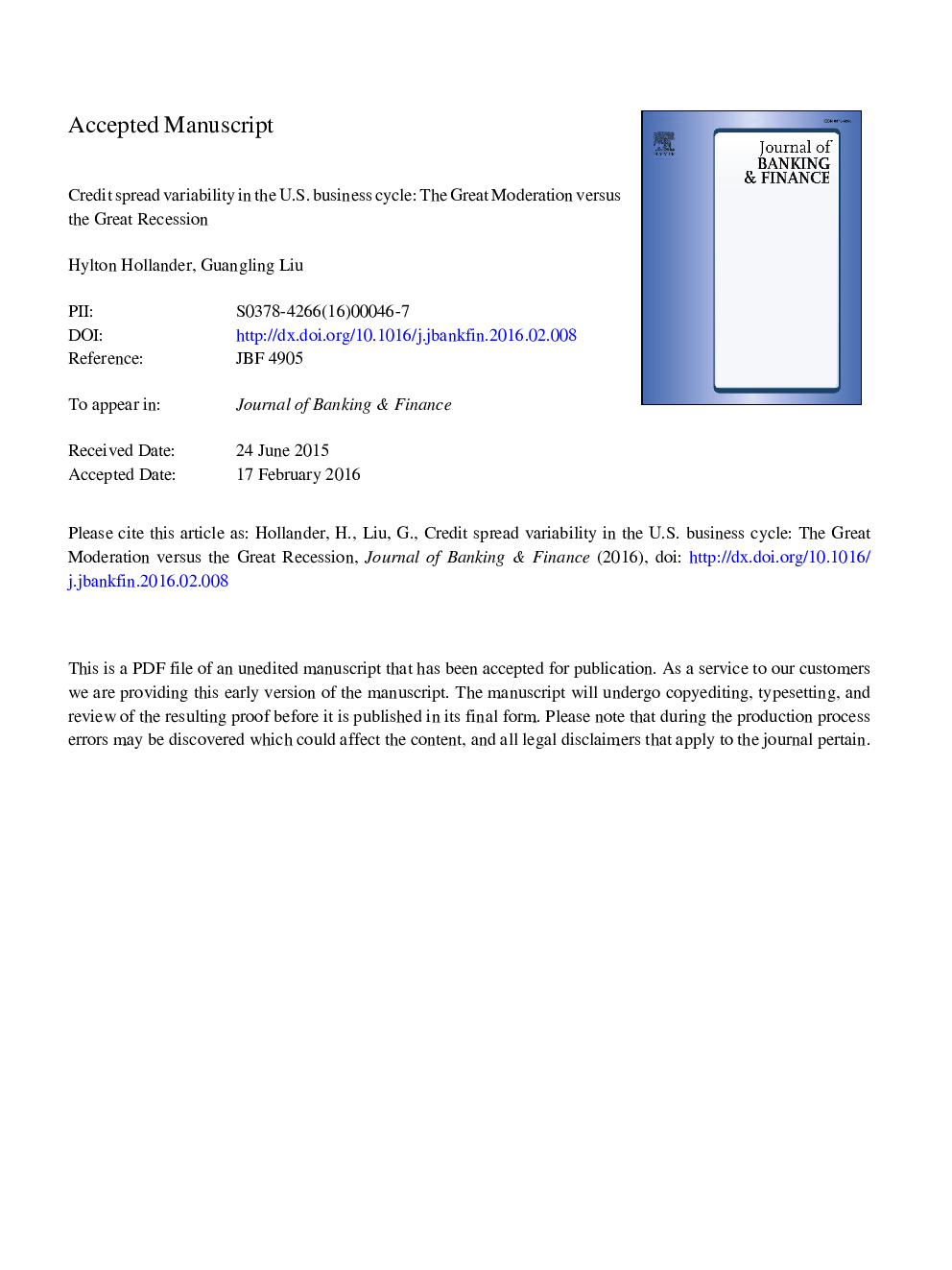| Article ID | Journal | Published Year | Pages | File Type |
|---|---|---|---|---|
| 5088387 | Journal of Banking & Finance | 2016 | 64 Pages |
Abstract
This paper identifies the prevailing financial factors that influence credit spread variability and shows how they affected the U.S. business cycle during the 1990-91 and 2001 recessions of the Great Moderation period (1984-2006) and the Great Recession of 2007-09. To do this, we develop and estimate a dynamic general equilibrium model in which financial intermediation and equity assets play a central role. Over the three recession periods, we find that bank market power (sticky rate adjustments and loan rate markups) played a significant role in the credit spread variability that disrupted the U.S. business cycle. Equity prices exacerbate movements in credit spreads through the financial accelerator channel, but cannot be regarded as one of the main driving forces of credit spread variability. Across the three periods, we observe a remarkable decline in the influence of technology and monetary policy shocks. The influence of loan-to-value ratio shocks declined after the 1990-91 recession, while the bank capital requirement shock exacerbated and prolonged credit spread variability over the 2007-09 recession.
Keywords
Related Topics
Social Sciences and Humanities
Economics, Econometrics and Finance
Economics and Econometrics
Authors
Hylton Hollander, Guangling Liu,
